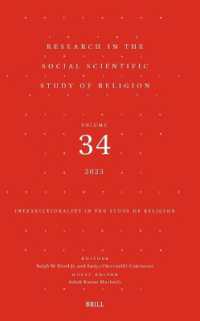Full Description
The first book-length monograph on Elaine Sturtevant, who has focused her career on the artistic copy.Asked to sum up her artistic pursuit, the American artist Elaine Sturtevant once replied: "I create vertigo." Since the mid-1960s, Sturtevant has been using repetition to change the way art is understood. In 1965, what seemed to be a group show by then "hot" artists (Andy Warhol, Jasper Johns, Roy Lichtenstein, George Segal, and James Rosenquist, among others) was in fact Sturtevant's first solo exhibit, every work in it created by herself.Sturtevant would continue to make her work the work of others. The subject of major museum exhibitions throughout Europe and awarded the Golden Lion for lifetime achievement at the 54th Venice Biennale, she will have a major survey at the MoMA, New York, in 2014.In Under the Sign of [sic], Bruce Hainley unpacks the work of Sturtevant, providing the first book-length monographic study of the artist in English. Hainley draws on elusive archival materials to tackle not only Sturtevant's work but also the essential problem that it poses. Hainley examines all of Sturtevant's projects in a single year (1967); uses her Gonzalez-Torres Untitled (Go-Go Dancing Platform) from 1995 as a conceptual wedge to consider contemporary art's place in the world; and, finally, digs into the most occluded part of her career, from 1971 to 1973, when she created works by Michael Heizer and Walter de Maria, and had her first solo American museum exhibit.








